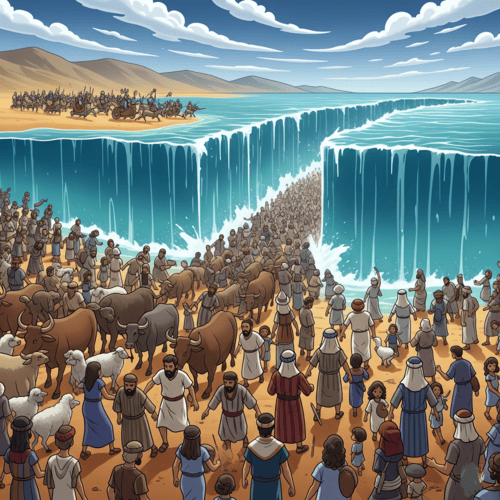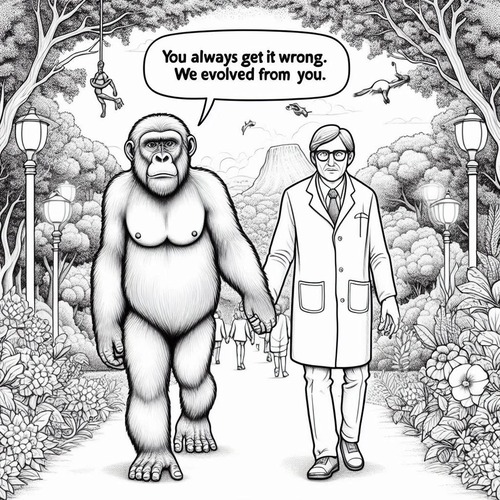Age of the Earth Discussions: How’s Helium a Gamechanger?
For decades, the scientific establishment has maintained the Earth is approximately 4.5 billion years old. This view, supported by conventional radiometric dating methods, has become so entrenched that alternative perspectives are often dismissed without proper examination. Yet a remarkable line of evidence—helium diffusion in zircon crystals—presents a formidable challenge to this consensus. The evidence isn’t just compelling; it may be game-changing.
THE HELIUM PUZZLE NO ONE WANTS TO SOLVE
When uranium and thorium decay radioactively, they produce helium as a byproduct. Helium, being a small and extremely mobile atom, readily diffuses (escapes) from minerals. The rate at which helium diffuses from minerals like zircon has been precisely measured in laboratory conditions, and these measurements present a profound problem for conventional geology.
Here’s why: If Earth’s zircon crystals are indeed billions of years old, virtually all helium produced through radioactive decay should have diffused out of these crystals long ago. Yet when scientists from the Radioisotopes and the Age of The Earth (RATE) project examined zircons from deep granite cores in New Mexico, they found the crystals retained significant amounts of helium—approximately 58% of what would have been produced through radioactive decay.
THE SMOKING GUN: DIFFUSION RATES DON’T LIE
Dr Russell Humphreys and his colleagues measured helium diffusion rates in these zircons under various temperatures. The results were striking. When they compared actual helium retention with what would be predicted by both a 6,000-year model and a 1.5-billion-year model, the data aligned dramatically with the young-Earth timeline.
At the temperatures these rocks have experienced (even accounting for varied thermal histories), helium simply diffuses too quickly to remain present in such quantities after billions of years. The mathematics of diffusion is well-established physics—an area mainstream geologists have struggled to counter effectively.
HELIUM A GAMECHANGER: WHY THE EVIDENCE GETS OVERLOOKED
Despite the significance of these findings, published in peer-reviewed journals, the helium diffusion evidence is routinely sidestepped in mainstream geological discussions. Why?
First, it directly challenges the foundational assumption of uniformitarianism—the idea that geological processes have always occurred at roughly the same rates. If helium diffusion rates are correct (and there’s no scientific reason to doubt the measurements), then either:
- The zircons are much younger than believed, or
- Radioactive decay occurred at accelerated rates in the past
Neither option fits comfortably within conventional geological frameworks.
Second, the implications extend beyond just dating methods. A young Earth timeline would require fundamental reconsideration of numerous scientific disciplines—from geology to evolutionary biology. The academic cost of seriously engaging with this evidence is simply too high for many scientists and establishments.
HELIUM A GAMECHANGER: THE WEAK COUNTERARGUMENTS
Critics have attempted to explain away the helium retention through various mechanisms:
- Helium reintroduction: The suggestion that environmental helium somehow re-entered the crystals contradicts basic physics. Diffusion works in the direction of concentration gradients—helium would flow out of the crystals, not in.
- Unique crystal properties: Some suggest these zircons must have unusual properties that trap helium. However, the measured diffusion rates account for the actual properties of these specific crystals.
- Complex thermal history: While varying temperature histories might affect diffusion rates, even the most generous scenarios cannot stretch helium retention to billions of years.
BEYOND HELIUM: A CONSISTENT PATTERN
The helium evidence doesn’t stand alone. It aligns with numerous other physical indicators suggesting the Earth is much younger than conventionally believed:
- Rapid decay of Earth’s magnetic field
- Insufficient accumulation of ocean sediments
- Preservation of soft tissue in dinosaur fossils
- Limited erosion of continental landforms
- Negligible seafloor sediment accumulation
Together, these lines of evidence form a coherent picture that supports a timeline measured in thousands—not billions—of years.
HELIUM A GAMECHANGER: TIME FOR HONEST REASSESSMENT
The helium diffusion evidence represents one of the most quantifiable, laboratory-tested challenges to an ancient Earth. It relies not on complex assumptions but on straightforward physics. The fact this evidence continues to be marginalised speaks volumes about the philosophical commitments driving much of modern geology.
For those willing to follow evidence wherever it leads, the message trapped in these tiny helium atoms is clear: Earth’s timeline needs serious reconsideration. Perhaps the most remarkable aspect of the helium diffusion argument isn’t just its scientific strength, but how effectively it exposes the bias inherent in supposedly objective geological dating methods.
The question isn’t whether helium diffusion rates support a young Earth—the data clearly shows they do. The real question is whether the scientific community has the intellectual courage and honesty to engage with this evidence, regardless of its implications.
HELIUM A GAMECHANGER: RELATED FAQs
Besides helium diffusion, what other radiometric evidence suggests a young Earth? Carbon-14 continues to be found in coal, diamonds, and dinosaur fossils that are supposedly millions of years old. Since carbon-14 has a half-life of only 5,730 years, virtually none should remain after 100,000 years, making its presence inexplicable in the conventional timeline. This widespread phenomenon suggests these materials are much younger than conventionally dated.
- How do polonium radiohalos support a young Earth timeline? Polonium radiohalos are microscopic damage patterns in rocks formed by the decay of polonium isotopes with extremely short half-lives (from 3 minutes to 138 days). These radiohalos appear fully formed in granite with no evidence of the parent uranium that should have produced them over long timescales. Their preservation indicates rapid rock formation that aligns with catastrophic processes rather than slow cooling over millions of years.
- Why don’t we see more erosion if Earth is billions of years old? Current erosion rates would level the continents in approximately 10-15 million years, yet we still have substantial continental landmasses. Mountain ranges like the Appalachians should have completely eroded away if they were hundreds of millions of years old as claimed. The preservation of significant topographical features is much more consistent with a timeline measured in thousands of years.
What does the decay of Earth’s magnetic field tell us about its age? Earth’s magnetic field is measurably decreasing at a rate that would make life impossible if projected backward more than 20,000 years. Historical measurements since the 1800s show consistent decay that, if extrapolated backward, indicates an implausibly strong field in the relatively recent past. This decay curve fits perfectly with a young Earth model but presents major problems for an old Earth view.
- How do soft tissue discoveries in dinosaur fossils challenge conventional dating? Dr Mary Schweitzer’s discovery of flexible blood vessels, red blood cells, and protein sequences in T-rex fossils supposedly 68 million years old defies natural decomposition processes. These biological materials should completely degrade within thousands of years, not millions, even under ideal preservation conditions. Their existence strongly suggests these fossils are much younger than conventionally believed.
- Why is the limited thickness of seafloor sediment problematic for an old Earth? Given measured rates of sediment accumulation from rivers flowing into oceans, the seafloor should have sediment layers tens of miles thick after billions of years. Instead, we find an average of only about 1,300 feet of sediment, representing approximately 12 million years of accumulation at most. This significant discrepancy is easily explained by a young Earth with a global flood event.
How do comets provide evidence for a young solar system? Short-period comets lose significant material with each orbit around the sun and have estimated lifespans of less than 10,000 years. The continued existence of numerous comets in our solar system is difficult to reconcile with a 4.5-billion-year timeline. The theoretical “Oort Cloud” proposed to resupply comets has never been observed and appears to be an ad hoc solution to preserve the old Earth paradigm.
HELIUM A GAMECHANGER: OUR RELATED POSTS
Editor's Pick

Self-Authentication: Why Scripture Doesn’t Need External Validation
"How can the Bible prove itself? Isn't that circular reasoning?" This objection echoes through university classrooms, coffee shop discussions, and [...]

Do Christians Need Holy Shrines? Why the Reformed Answer Is No
Walk into a medieval cathedral and you'll encounter ornate shrines, gilded reliquaries, and designated "holy places" where pilgrims gather to [...]

I Want To Believe, But Can’t: What Do I Do?
"I want to believe in God. I really do. But I just can't seem to make it happen. I've tried [...]

BC 1446 or 1250: When Did the Exodus Really Happen?
WHY REFORMED SCHOLARS SUPPORT THE EARLY DATE Many a critic makes the claim: “Archaeology has disproven the biblical account [...]

Does God Know the Future? All of It, Perfectly?
Think about this: our prayers tell on us. Every time we ask God for something, we’re confessing—often without realising it—what [...]

Can Christian Couples Choose Permanent Birth Control?
Consider Sarah, whose fourth pregnancy nearly killed her due to severe pre-eclampsia, leaving her hospitalised for months. Or David and [...]

Bone of My Bones: Why Eve Was Created From Adam’s Body
"This at last is bone of my bones and flesh of my flesh!" Adam's joyful exclamation upon first seeing Eve [...]

Is Calvinism Fatalism in Christian Disguise? Think Again
We hear the taunt every now and then: "Calvinism is just fatalism dressed up in Christian jargon." Critics argue Reformed [...]

Can Churches Conduct Same-Sex Weddings?
In an era of rapid cultural change, churches across America face mounting pressure to redefine their understanding of marriage. As [...]

Gender Reassignment: Can Christian Doctors Perform These Surgeries?
In the quiet of a clinic, a Christian physician faces a challenging ethical question. A patient sits across the desk, [...]
SUPPORT US:
Feel the Holy Spirit's gentle nudge to partner with us?
Donate Online:
Account Name: TRUTHS TO DIE FOR FOUNDATION
Account Number: 10243565459
Bank IFSC: IDFB0043391
Bank Name: IDFC FIRST BANK






